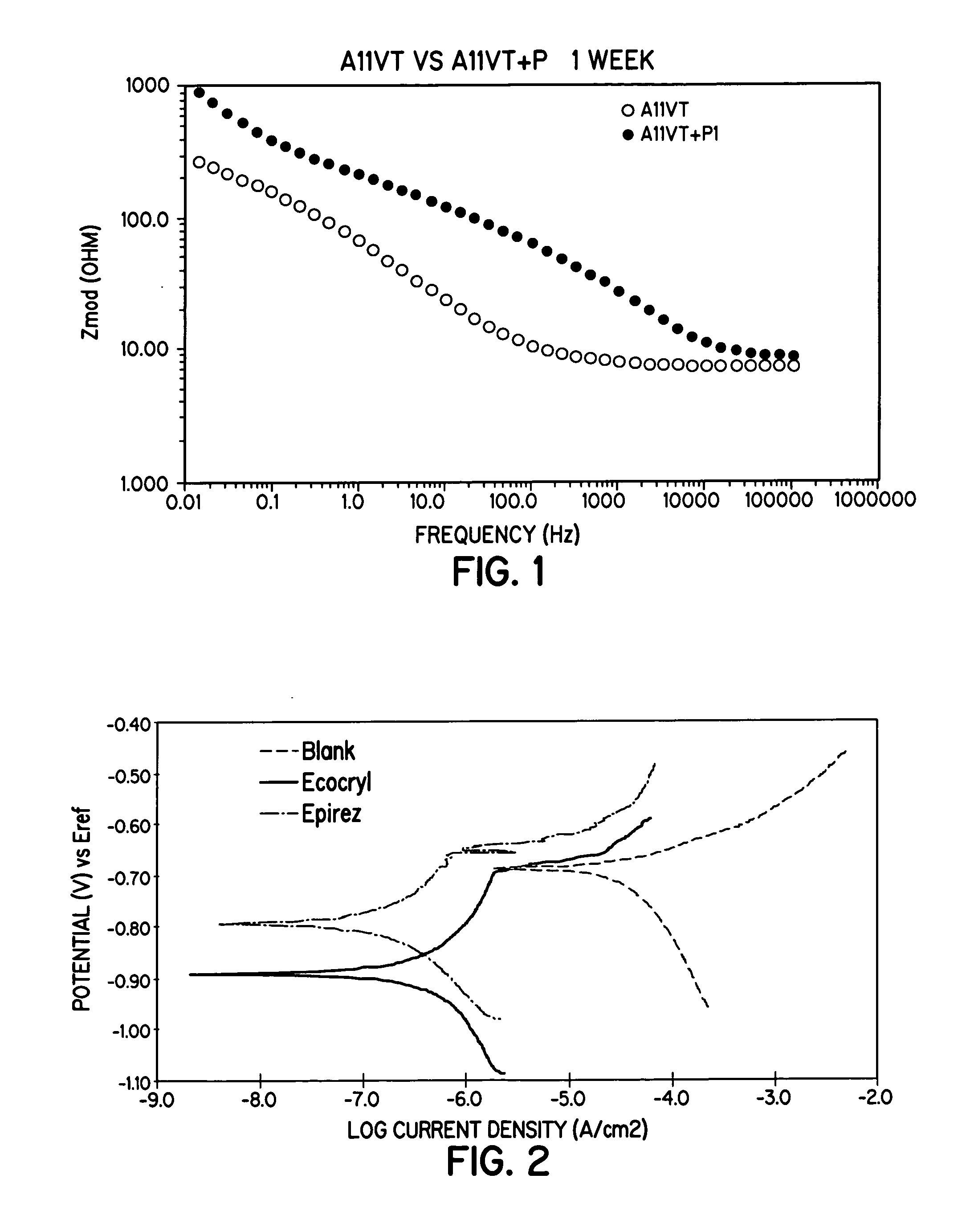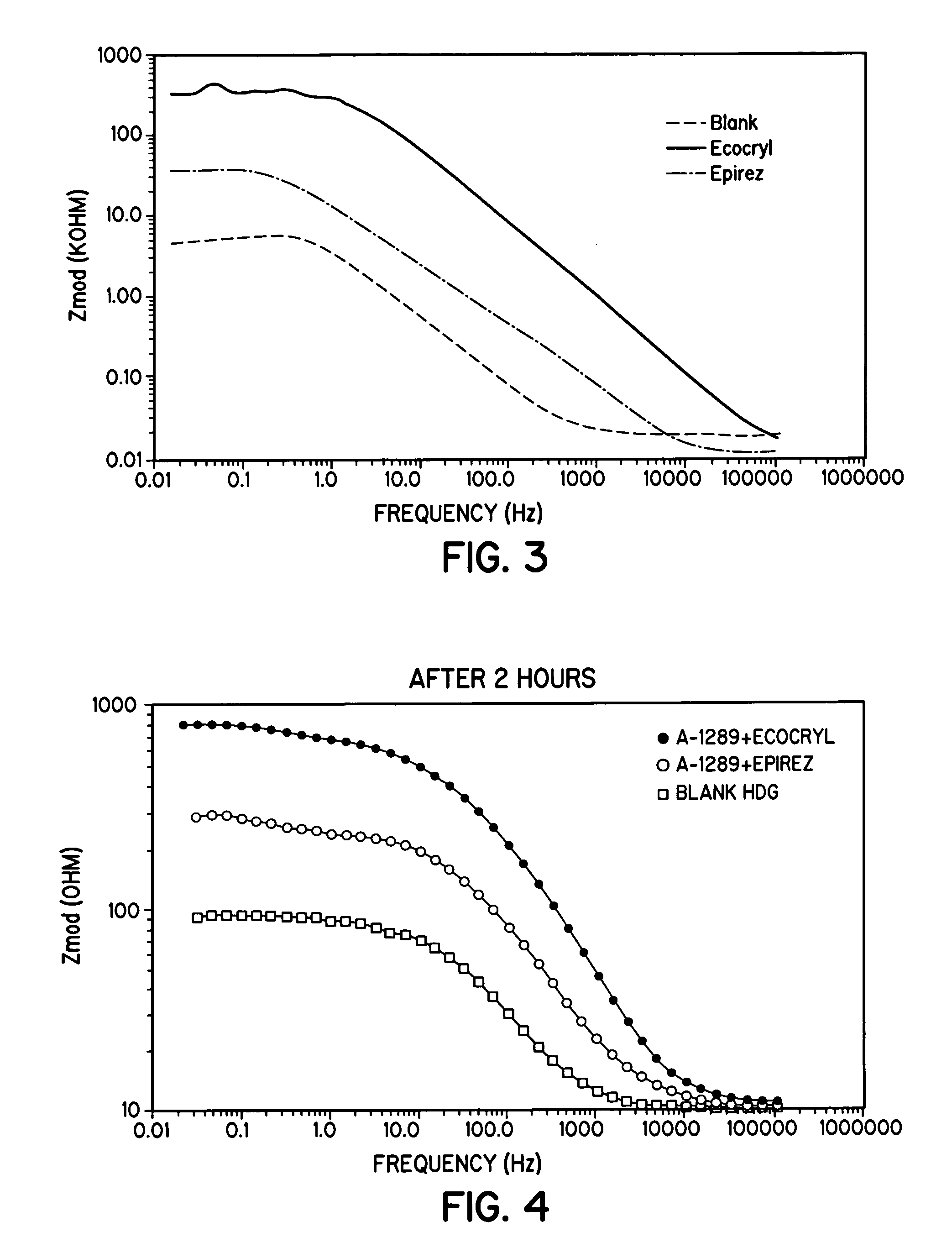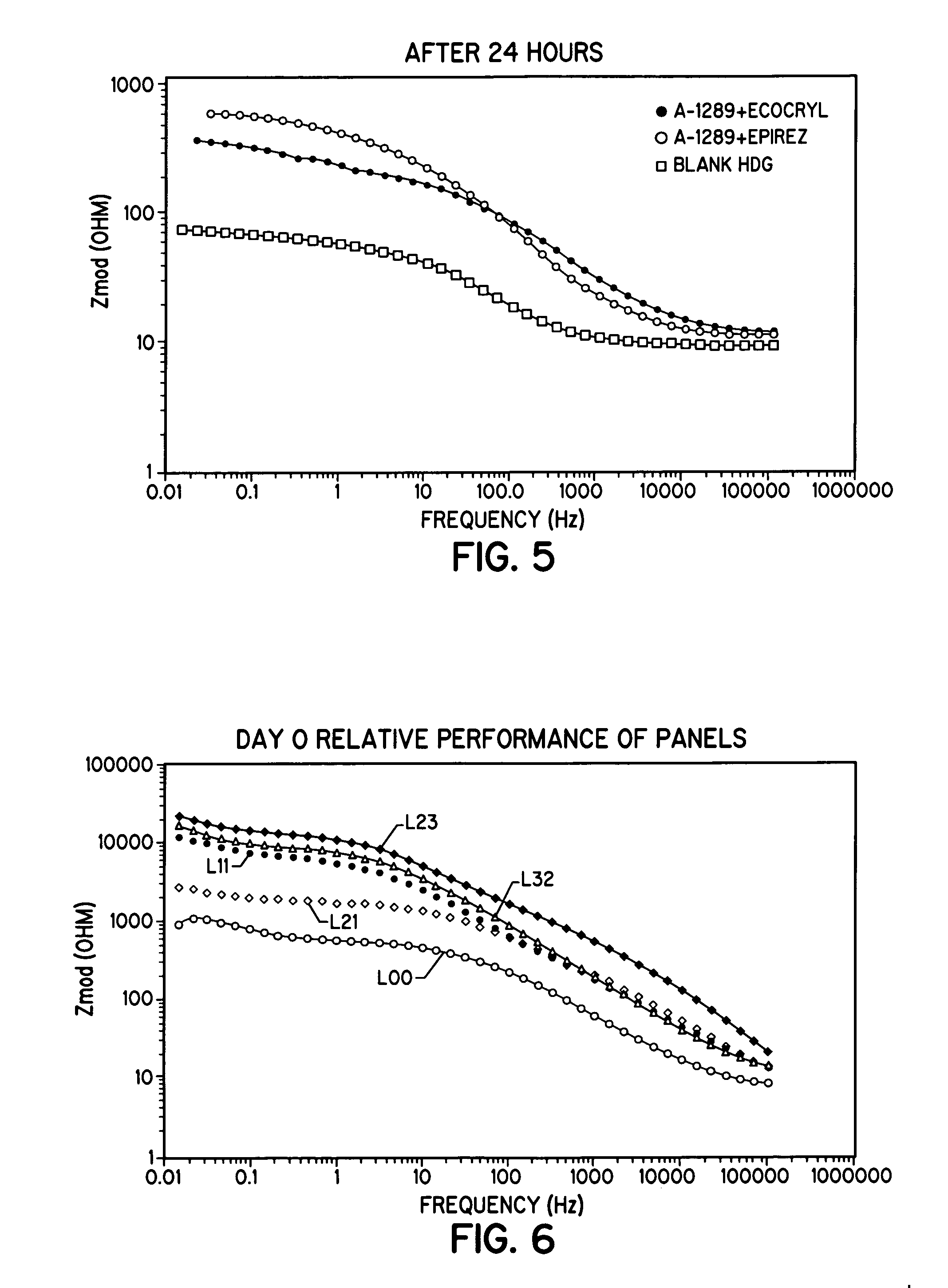Silane coating compositions and methods of use thereof
- Summary
- Abstract
- Description
- Claims
- Application Information
AI Technical Summary
Benefits of technology
Problems solved by technology
Method used
Image
Examples
example ii
[0056] In this example, a 5% by volume A-1289 silane solution was made by dispersing 5 ml bis-(triethoxysilylpropyl-)tetrasulfide (Silquest® A-1289, available from GE Silicones, www.gesilicones.com) in 95 ml DI water. 4 g EPI-REZ® WD 510 (a water-reducible diglycidyl ether of bisphenol A (DGEBA) epoxy resin (100% resin), available from Hexion Specialty Chemicals, Inc. of Columbus, Ohio) was added into 100 ml of the 5% A-1289 aqueous mixture to provide a water-based silane coating composition. The individual components were stir-mixed for 24 hrs before combining.
example iii
[0057] In yet a third example, a 5% by volume A-1289 silane solution was made by dispersing 5 ml bis-(triethoxysilylpropyl)tetrasulfide (Silquest® A-1289, available from GE Silicones, www.gesilicones.com) in 95 ml DI water. 4 g of ECO-CRYL® 9790, an aqueous acrylic with 42% solid dispersed in 7% 2-propoxyethanol, 3% xylene, and 3% ethanolamine, and 45% water, was added into 100 ml of the 5% A-1289 aqueous mixture to provide a water-based silane coating composition. The individual components were stir-mixed for 24 hrs before combining.
[0058] Aluminum alloy (AA 6111) and HDG panels were cleaned with a 7% Chemclean (purchased from Chemetall / Oakite Inc) at 60° C., followed by tap water rinsing and blow air-drying. The cleaned AA 6111 and HDG panels were immersed into the above two silane coating compositions (Examples II and III), followed by 150° C. curing for 1 hour.
[0059] DC polarization test and EIS measurement were conducted on the above panels in neutral 3.5% NaCl solution. The ...
example iv
[0068] In another example, an AV5 silane mixture was made by mixing 5 parts of neat bis-(trimethoxysilylpropyl)amine (Silquest® A-1170, available from GE Silicones, www.gesilicones.com) with 1 part of neat vinyltriacetoxysilane (SIV 9098, available from Gelest Inc., www.gelest.com). EPI-REZ® WD 510 (a water-reducible diglycidyl ether of bisphenol A (DGEBA) epoxy resin (100% resin), available from Hexion Specialty Chemicals, Inc. of Columbus, Ohio) was mixed with the AV5 silane mixture at a 1:4 ratio by weight. 2 volume parts of the silane / resin mixture was then added into 2.0 parts deionized (DI) water and 96 parts denatured alcohol to provide an organic solvent-based silane coating composition in accordance with one embodiment of the present invention.
[0069] Aluminum alloy (AA 2024-T3) panels were cleaned with a 7% Chemclean (purchased from Chemetall / Oakite Inc) at 70° C., followed by tap water rinsing and blow air drying. The cleaned AA 2024-T3 panels were immersed into the above...
PUM
| Property | Measurement | Unit |
|---|---|---|
| Fraction | aaaaa | aaaaa |
| Fraction | aaaaa | aaaaa |
| Percent by mass | aaaaa | aaaaa |
Abstract
Description
Claims
Application Information
 Login to View More
Login to View More - R&D
- Intellectual Property
- Life Sciences
- Materials
- Tech Scout
- Unparalleled Data Quality
- Higher Quality Content
- 60% Fewer Hallucinations
Browse by: Latest US Patents, China's latest patents, Technical Efficacy Thesaurus, Application Domain, Technology Topic, Popular Technical Reports.
© 2025 PatSnap. All rights reserved.Legal|Privacy policy|Modern Slavery Act Transparency Statement|Sitemap|About US| Contact US: help@patsnap.com



